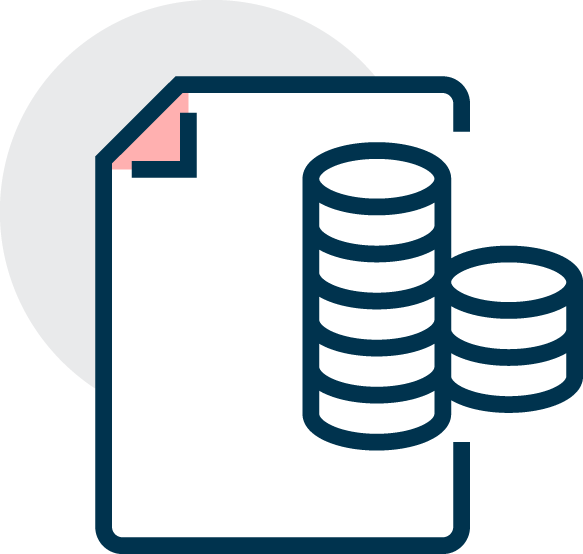You can avail a new home loan to purchase a flat, row house, or bungalow either from private developers in approved projects or from Development Authorities such as DDA, MHADA etc., or from Co-operative Housing Societies or Apartment Owner’s Association. To know more about HDFC Bank Home Loanss, click here
- Why should you buy a home
- Property related decisions
- Home loan related information
Types Of Properties
Different Types Of Home Loans
- Home loans
- Plot loans
- Home loan balance transfer
- Affordable housing loans
- Rural housing loan
You can take a loan to purchase a plot of land on which you wish to construct your home. You can purchase the plot of land through direct allotment, or you could purchase a resale plot. You can also take a home construction loan to construct your home on a freehold / lease hold plot or on a plot allotted by a Development Authority. Learn more about plot loans offered by HDFC Bank.
The regulatory framework in India also allows customers to transfer their home loans from one Financial Institution (FI)/lender to the-other. Transferring a home loan (also called balance transfer/ refinance) from one lender to another is typically done when a customer finds that the new lender offers better terms, better customer service, a higher loan amount and/or longer loan tenure. Transferring your home loan from one lender to another is easy. However, to become eligible for home loan transfer you need to keep the following things in mind:
- You will need to have paid at least 12 EMIs prior to the balance transfer.
- You must have a good credit score.
To find out whether the balance transfer will actually be beneficial, consider factors as mentioned below:
- Compare the home loan rate of the existing lender with that of the new lender.
- Balance transfer only makes sense if the principal amount repayable is substantial. If you are nearing completion of your home loan repayment, balance transfer may not make sense.
- Balance transfer entails a processing fee. Consider this expense in your overall home loan cost.
- Check for any offers that come along with the balance transfer.
- You also have the option to renegotiate with your existing home loan provider to match your home loan terms with that of the new lender you are considering for balance transfer.
To know more about HDFC Bank’s home loan balance transfer, click here. Use our balance transfer calculator to find out how much you can save on EMIs by transferring your outstanding home loan from another lender to HDFC Bank.
In case you need additional funds, you can also avail of an HDFC Bank Top Up Loan along with balance transfer (subject to fulfilment of certain terms and conditions).
Some home lenders such as HDFC Bank offer loans to individuals in low income groups (minimum monthly income of ₹10,000 for salaried individuals /₹2 lakhs per annum for self-employed individuals. These customers can use the home loan to purchase a new or an existing home, or construct a home on a free hold or lease hold plot or on a plot allotted by a Development Authority, or purchase a plot of land.
If you are an agriculturist looking to purchase a home in the rural or in urban areas, you can take a home loan to fund your home purchase. Rural housing loans are specially designed loans for Agriculturists, Planters, Horticulturists, Dairy Farmers for purchasing an under construction / new / existing residential property in rural and urban areas. You can also construct your home on a freehold / lease hold residential plot in rural and urban areas. For Agriculturists, no mortgage of agricultural land is required to avail the home loan. Additionally, there is no mandatory requirement of Income Tax Returns from Agriculturists applying for a home loan. Learn more about HDFC Bank’s Rural Housing Loans.
Benefits Of Availing A Home Loan
The benefits as per the income categories are as follows:
EWS category comprises of individuals whose annual household income is up to ₹3 lakhs. LIG category is defined as those whose annual household incomes are above ₹3 lakhs but below ₹6 lakhs. The maximum interest subsidy for this group is 6.5%, provided that the unit being constructed or purchased does not exceed a carpet area of 30 square metres (approx. 322.917 square feet) in case of the EWS category and 60 square metres (approx. 645.83 square feet) in case of the LIG category. The interest subsidy is limited to a maximum loan amount of ₹6 lakhs. The maximum subsidy available over the loan tenure is ₹2.67 lakhs. The houses constructed/acquired with central assistance under the Mission should be in the name of the adult female member/woman of the household or in joint name with the adult male member of the household, and only in cases when there is no adult female member in the family, the house can be in the name of male member of the household. However, this is not compulsory for construction of the house. This scheme is valid up to 31/03/2022.
MIG 1 category comprises of individuals with a household income above ₹6 lakhs but below ₹12 lakhs. The maximum interest subsidy for this group is 4%, provided that the unit being constructed or purchased does not exceed the carpet area requirement of 160 square metres (approx. 1,722.23 square feet). This subsidy is however limited to a maximum loan amount of ₹9 lakhs over a home loan tenure of up to 20 years. The maximum subsidy available over the loan tenure is ₹2.35 lakhs. This scheme was valid up to 31/03/2021.
MIG 2 category comprises of individuals with a household income above ₹12 lakhs but below ₹18 lakhs. The maximum interest subsidy for this group is 3%, provided that the unit being constructed or purchased does not exceed the carpet area requirement of 200 square metres (approximately 2,152.78 square feet). This subsidy is however limited to a maximum loan amount of ₹12 lakhs over a home loan tenure of up to 20 years. The maximum subsidy available over the loan tenure is ₹2.30 lakhs. This scheme was valid up to 31/03/2021.
| SECTION | COMPONENT | BENEFIT* |
|---|---|---|
| Section 23 | Annual Value (See note 1) | Annual value is considered Nil for up to two houses. |
| Section 24 | Interest on home loan | Deduction of interest on home loan is allowed up to ₹2,00,000 or ₹30,000 as the case may be. Deduction of interest on home loan is limited to ₹30,000 if the property is acquired or constructed with the loan on or after 01.04.1999 and the acquisition or construction is not completed within 5 years from the end of the financial year in which the loan was availed. |
| Section 26 | Co- owner | If the house property is owned by two or more persons, each co-owner is entitled to a deduction of ₹2,00,000 or ₹30,000 as the case may be, on account of interest paid on the home loan. The deduction is allowed only if the share of each owner is definite and ascertainable. |
Note : The basis of calculating income from house property is annual value. Annual Value is inherent capacity of the property to earn income. Tax is levied on inherent capacity of the property to generate income not on actual receipt of the income.
Gross Annual Value of the house property is higher of the following
- Expected rent, it is the sum for which property might reasonably expected to let out from year to year.
- Actual rent received or receivable
If the property is let and vacant for whole or any part of the year. The actual rent received or receivable is less than a) above owing to owing to vacancy of the house property. In such situations the rent received or receivable shall be considered as Gross Annual Value.
| SECTION | PAYMENT TYPE | MAXIMUM DEDUCTION | BENEFIT* |
|---|---|---|---|
| Section 80C | Repayment of principal amount of loan availed for construction or acquisition of house property. | Up to ₹1,50,000 |
|
| Section 80EE | Interest payable on loan availed from any financial institution in FY16-17 for the purpose of acquisition of a residential property. | Up to ₹50,000 |
|
| Section 80EEA | Interest payable on loan availed from any financial institution in FY19-20 and FY20-21 for the purpose of acquisition of a residential property. | Up to ₹1,50,000 |
|
Note:
The above table and computation are only illustrative in nature. Readers are advised not to rely on the same and seek independent advice from your tax consultant to compute the amount of tax deduction which readers may be eligible for as a first time home buyer.
The tax benefits discussed above can be claimed only if the first-time home buyer has not opted for new concessional tax regime (under section 115 BAC). It is advisable for every individual to undertake the exercise of comparing his/her tax liability under the two tax regimes to understand which one is more beneficial.
Home Loan Pricing
- Home loan interest rate types
- Processing fee and other charges
- Home loan prepayment charges
Home loan interest rates come in two options - floating rate loans and combination rate loans.
1
Floating rate home loans
Also referred to as Adjustable Rate Home Loan (ARHL). Interest rate linked to the lender’s benchmark rate, which, in turn, moves in sync with the market interest rates. If there is a change in the benchmark rate, the interest rate on the loan also changes proportionately.
You may opt for a floating rate home loan in the following circumstances:
- If you are expecting interest rates in general to fall over time, opting for a floating rate loan in such a scenario may result in the interest rate applicable to your loan falling too, thereby reducing the cost of your loan.
- Floating rate loans are suitable for those who are usually unsure about interest rate movements and would prefer to go with the market rates.
2
Combination rate home loans
In a combination housing loan interest rate, the interest rate is fixed for a specified period (usually 2-3 years) after which it converts to floating rate. The fixed interest rate is usually slightly higher than the floating rate.
You may opt for a combination rate home loan in the following circumstances:
- If you are comfortable with the EMI you are committing to pay for the period when the interest rate is fixed. It may not exceed 25-30% of your take-home monthly income.
- You see a scenario of rising interest rates and, therefore, consider to lock in your home loan at the existing rate for the first 2-3 years of the loan (based on the period the lender permits).
It is normally difficult to predict future home loan rates. It may so happen that the housing loan interest rates move contrary to your expectation, which may leave you with an unfavourable interest rate option on hand. Hence, floating rate home loans tend to be more popular.
The home loan provider usually charges a one-time fee to process your home loan (called a processing fee). The lender may also levy other charges such as statutory and regulatory charges, fees payable to advocates and technical assessors, etc. Take a look at the processing and incidental charges levied by HDFC Bank.
Prepayment is a facility which allows you to repay your housing loan (in part or in full) before the completion of your loan tenure.
Before considering prepayment of your housing loan, you need to ensure that you have sufficient funds for medical exigencies and your financial goals such as marriage, travel abroad, etc. You should avoid being in a situation where you have overextended yourself to prepay your home loan and, as a result, are funds-strapped when you most need it.
Floating rate home loans do not attract any pre-closure/fore-closure charges from individuals.
In the case of combination rate home loans, prepayment charges may be levied by a lender if the loan is prepaid during the fixed tenure of the loan and such prepayment is made not from the individual’s own funds but from the amount received from another lender for the purpose of balance transfer/refinance. However, if you use your own funds to prepay your housing loan, no prepayment penalty is levied.
Housing loans are easier to service; the interest rate on home loans is generally lower than the rate of interest charged on personal or credit card loans. Therefore, if you want to reduce debt, you may consider prepaying high interest-bearing loans on priority as against housing loans which carry a lower rate of interest.
You are entitled to claim tax exemption on principal repayment and on interest paid on housing loans (at stipulated amounts and subject to conditions). Moreover, with the Government’s focus on ‘housing for all’, it is expected that the tax incentives on housing loans may increase over time. On full prepayment of your housing loan, you will no longer enjoy the aforesaid tax benefits; in case of part prepayments, you will get proportionately lower tax benefits.
Document Checklist
Home Loan Documents For Salaried
- Filled in application form.
- PAN card (this is mandatory to complete KYC).
- Proof of identity and residence – Passport, voter ID or driving license
- Proof of income: Salary Slips (Last 3 Months);
- Bank Statements showing salary credits (Last 6 Months).
- Latest Form-16 and IT returns
Home Loan Documents For Self-Employed
- Filled in application form.
- PAN card (this is mandatory to complete KYC)
- Proof of identity and residence (Passport, Voter ID, or Driving License)
- Proof of Income
Income Tax Returns along with computation of income for the last 3 Assessment Years (of both the individual and the business entity and attested by a CA), Last 3 years’ Balance sheet and Profit & Loss A/c Statements, with Notes to accounts/Annexures/Schedules (of both the individual and the business entity and attested by a CA), Last 6 months’ Current A/c Statements of the business entity and savings Account Statements of the individual.
Note:
- 1.The home loan documents must be self-attested.
- 2.The above list is indicative in nature and additional documents can be asked for.
How to choose a home loan lender
Finding a suitable home loan provider is critical to ensure your home purchase is successful. With a little bit of research, talking to your friends, and searching the internet, you can shortlist a handful of home loan lenders. Here are a few points to consider:
- Is the lender able to guide you and make the borrowing process smooth and easy? The last thing that you want is a harrowing and unpleasant overall house ownership experience.
- Is the lender an established player? Policies, practices, and charges differ for each institution. You don’t want your dream to fall through by opting for a lender that is yet to be established in the industry, especially as this could be the biggest financial transaction that you do in your life.
- Does the lender understand the housing market? The real estate industry in India continues to be unorganised and fragmented. Market and industry behaviour tend to vary across regions and cities. Your lender should have a good understanding of the market.
- Do they provide you assistance in identifying the right project? This makes your search process that much simpler. Do they maintain a database of pre-approved projects after legal and technical due diligence? A project with a clean legal title, adhering to the sanctioned plan, and with all required permissions, can give you peace of mind.
- Does the lender provide you with counselling facilities to help you understand all aspects of a loan (types of interest rate, loan term, repayment process, etc.)? Remember, each and every aspect of the home loan has a financial implication and expertise does help.
- The lender needs to be customer-focused with a culture of fair dealing and ethical conduct. Confidentiality of customer information has to be a part of the company’s DNA. Secure storage facilities to store your original property documents safely is another critical aspect that you may look out for.
- Flexible repayment options with varying EMI structures would certainly be a great advantage over the long term. Tailor-made repayment schemes could benefit you.
- Small add-ons such as a doorstep service and online loan approval simplifies your life greatly. In this technological era, online and mobile access to your loan account is necessary. A wide interconnected branch network further makes life easy for you.
- Find out if the lender can offer assistance in procuring insurance on your home or your home loan.
Apply online for a Home Loan
Online Home Loan Sanction in 4 simple steps
- Apply Online
- Upload Documents
- Pay Fees
- Get Approval
















